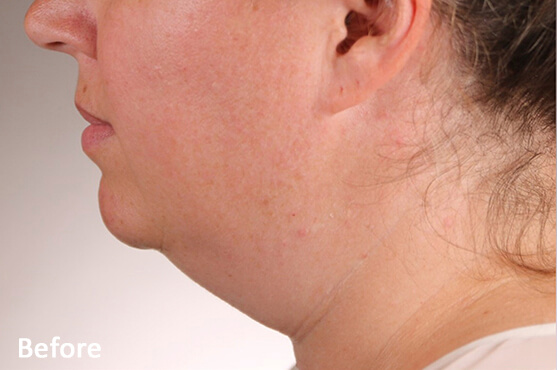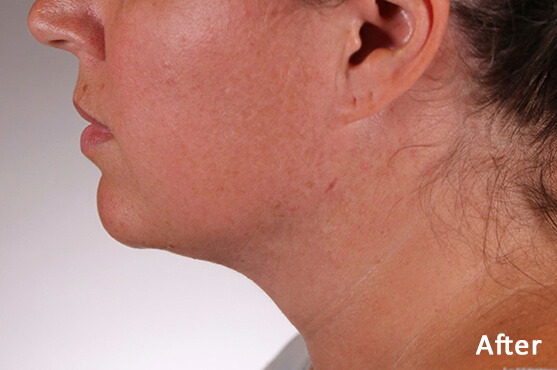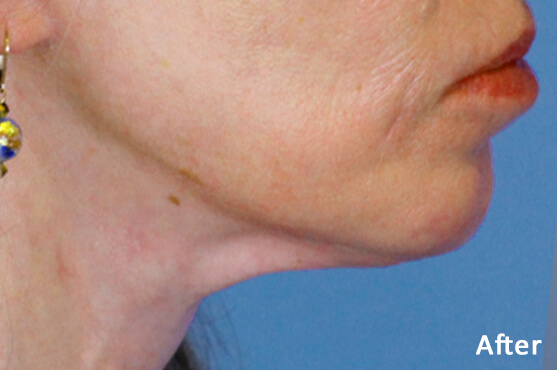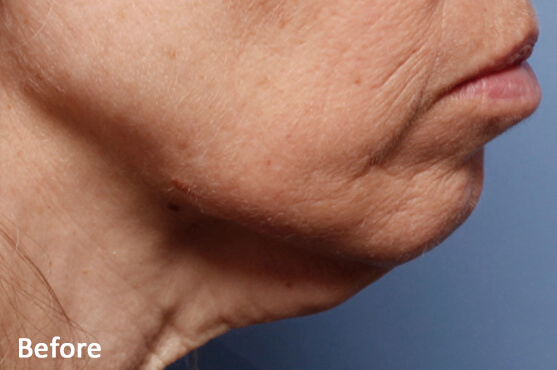Facetite
Facetite Treatment in Raleigh, NC - Accutite Raleigh, NC | JIYA
What Is Facetite?
Facetite is a radiofrequency device that goes above and underneath the skin to tighten the skin and tissues. Along with radiofrequency, it utilizes heat internally and externally. The device consists of an out node that is gently moved across the face. Through tiny incisions in the skin, Dr. Jindal inserts a flexible rod attached to the base. A node slides across the surface of the skin above the rod underneath it.
Due to the precision of Facetite, it delivers all of its energy to the treated areas. Also, unlike other technologies that utilize heat, it uses two different temperatures internally and externally. This increases safety because it prevents the treatment areas from overheating or causing uncontrolled damage.
While there is an internal treatment component to Facetite treatment in Raleigh, it is still considered non-surgical because the incisions often do not require stitching and patients can return to work the next day. Dr. Jindal does not remove skin during the procedure.
The Science Behind Facetite
The Science Behind Accutite
Accutite is the same procedure as Facetite except it is designed to treat smaller areas with overall less tissue. For example, to treat the brow area, the traditional Facetite device is too large. Accutite allows Dr. Jindal to treat more of the face and specific places you want to address.
It is possible to have Facetite and Accutite performed at the same time. Dr. Jindal can provide his opinion on if this is an option for you and which treatment is ideal based on your goals and concerns.
Benefits
Facetite offers many benefits to patients. Beyond offering a non-surgical alternative to a facelift, it can treat a wider variety of patients than specialized surgery. Among some of the benefits of Facetite include:
- Tighter facial contours
- Contouring of the face
- Reduction in unwanted facial fat cells
- Tighten loose skin
- Helps the skin look more lifted
- Slimmer looking face
- More youthful appearance
- Only one treatment session
- Little to no scars
- Completely natural
- Not placed under general anesthesia
- Customizable
- Limited recovery
- Few side effects
- Takes about an hour
- Can combine with liposuction
Facetite vs. Facelift
Beyond the most obvious difference between Facetite and Facelift—one being non-surgical and the other surgical—there are times when Dr. Jindal recommends one procedure over another. For example, Facetite cannot take a patient with advanced signs of aging and completely rejuvenate their face. Here are some of the differences in the procedures and uses of Facetite and facelift surgery.
Facetite
- No general anesthesia
- Best for middle-aged or younger patients
- No skin removed
- Small incisions
- Can help contour the face
- An hour procedure
- Does not address muscle laxity or tighten the muscles
- Fewer risks
- Mild recovery
- Little to no time off work
- Subtler results
Facelift
- Little to no scars
- Completely natural
- Not placed under general anesthesia
- Customizable
- Limited recovery
- Few side effects
- Takes about an hour
- Can combine with liposuction
The procedures, of course, have similarities. Both treat the face and/or neck and are often combined with liposuction or other facial treatments. People who have had a facelift in the past may also benefit from Facetite treatment to help maintain their results. Ultimately, Dr. Jindal will evaluate your facial anatomy, goals, and medical history to recommend the best treatment for you.
The Facetite Procedure In Raleigh
Upon making markings, Dr. Jindal will administer local anesthesia. This may include a combination of topical anesthesia on the skin itself and lidocaine injections. Once numb, Dr. Jindal will make the necessary access points for the cannula. This usually consists of three to five tiny incisions at hidden points along the face and neck. The incisions are not larger than a few millimeters and often do not require stitches or scars.
Following the creation of the access points, Dr. Jindal may use a blunt cannula to create tunnels just under the skin. This increases the precision and makes the treatment itself less traumatic. He may not perform this during every Facetite procedure.
Dr. Jindal will then use the Facetite device and insert the flexible rod under the skin and guide the surface node above the end of the rod. You should not feel any pain other than some basic pressure during the procedure. When treating the entire face and neck, the procedure tends to take around an hour.
Frequently Asked Questions
Yes, Facetite does help remove targeted pockets of fat for a slimmer and contoured face. With that said, it is not as effective as liposuction. For areas it is difficult to perform liposuction, such as along the jawline or cheeks, Facetite is a great alternative. The slimming effect is mild and not usually overdone.
Facetite traditionally treats from the midface down. Accutite—a smaller version of Facetite—helps treat the brow and eye areas. Therefore, Facetite and Accutite can treat nearly any area on the face or neck that experiences skin laxity and sagging. Some of the most commonly treated areas include:
- Jaw/jowls
- Under the chin
- Neck
- Midface/Nasolabial folds
- Under eyes
- Forehead/brows
Unlike with a facelift, there is no traditional surgical recovery. Many patients return to work the day following the procedure. Though, taking a few days off to rest and heal up is not a bad idea. Patients usually do not experience major side effects. Dr. Jindal will likely recommend refraining from strenuous physical activity for one to two weeks.
Other common post-procedure instructions include:
- Keep head elevated, including when sleeping
- Soft diet may be recommended for two days if there are access points in or near the mouth
- Do not apply makeup for at least 72 hours
- Avoid using exfoliants and products such as retinol
- Do not touch the treatment areas unnecessarily, Massage only if instructed
- Wear compression garment and/or head wrap
- Protect access points from water and sun exposure
- Light activity is encouraged, but you should avoid overly strenuous exercise
- Stay hydrated and eat well
Since Facetite uses radiofrequency energy, patients have concerns about how it may affect their skin tone. It is well known that lasers can cause permanent pigmentation issues in those with melanated skin. Additionally, when used incorrectly it may burn lighter skin. However, radiofrequency is not a laser. Thus, it does not carry the same risks. While it is still possible to have adverse effects, skin tone does not factor into this with Facetite as it may with laser procedures.

The Best
Facetite in Raleigh
The Jindal Institute of Youthful Aging specializes in facial plastic surgery and facial rejuvenation procedures to promote a longer lasting youthful appearance. Offering surgical and non-surgical facelift options such as Facetite, Dr. Jindal caters his treatment plans to each individual patient. JIYA provides the best Facetite Raleigh offers.
Dr. Jindal specializes in oculoplastic surgery and facial plastic surgery that aims to make the face look younger. With years of surgical experience in the facial area—within both the medical and cosmetic spheres—Dr. Jindal is among one of the best plastic surgeons in Raleigh, North Carolina.
To learn more or schedule a consultation at The Jindal Institute of Youthful Aging, call us or reach out online via contact form or Price Simulator.




